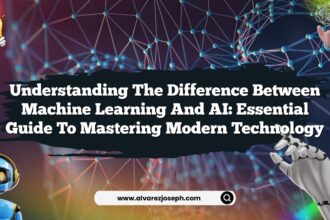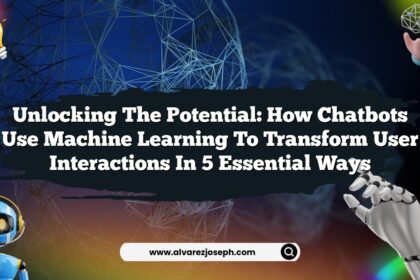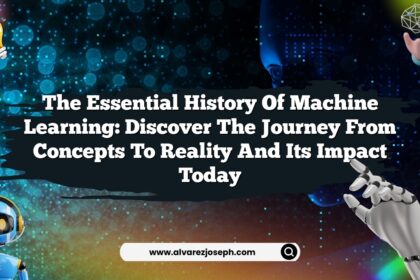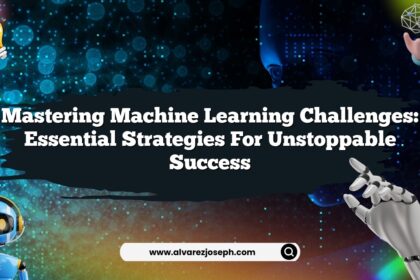Imagine a world where every online experience feels tailor-made just for you. Sounds like a dream, doesn’t it? Whether you’re binging on Netflix, shopping for the next must-have gadget, or hunting for that perfect Spotify playlist, the magic behind this seamless personalization is none other than machine learning. It’s like having a personal concierge who knows your tastes better than your best friend. But how does it all work, and why is it so darn effective? Let’s dive into the fascinating universe where machine learning meets personalization, and how it powers the recommendations that shape our digital lives.
The Art and Science of Personalization in Machine Learning
Personalization isn’t just about slapping your name on an email. It’s a sophisticated dance of algorithms and data that tries to understand you on a deeper level. At its core, personalization powered by machine learning is about creating an intimate digital experience by predicting what you might like or need next. It’s like your favorite barista who remembers your order, even before you ask for it, but on a much grander scale.
The journey begins with data—lots of it. Every click, like, and share you make online is a breadcrumb that tells a story about your preferences. Machine learning models consume this data to discern patterns and make predictions. The goal? To serve up content, products, or services that resonate with you, making your interaction with technology feel less robotic and more human.
How Machine Learning Models Predict Your Preferences
You might be wondering, how exactly do these models work their magic? At a basic level, machine learning models are tools that learn from historical data to make predictions about future behavior. They don’t just memorize past interactions; they use them to infer unknown truths about users. This is achieved through techniques like clustering, classification, and deep learning.
- Clustering: Groups users with similar preferences and behaviors to make shared recommendations.
- Classification: Assigns items or content into categories based on user interests.
- Deep Learning: Mimics the human brain to analyze patterns and improve predictions continuously.
These models are constantly evolving, adapting to new data like a chameleon changing colors. They learn from every interaction, adjusting their predictions to get better over time. It’s a dynamic process where the more they know, the better they get.
Making Sense of User Data: The Backbone of Personalization
Have you ever noticed how platforms like Spotify seem to know exactly what you want to listen to next? The secret sauce lies in the way they handle user data. Machine learning thrives on vast amounts of information. It digests data like a gourmand at a buffet, extracting insights that fuel personalized recommendations.
But handling such data isn’t just about quantity; it’s about quality. Garbage in, garbage out, as they say. Effective personalization hinges on clean, relevant, and timely data. This involves sophisticated techniques for data collection and processing, ensuring that what the machine learns is both accurate and useful.
The Role of Collaborative Filtering and Content-Based Filtering
When it comes to recommendation systems, two heavyweights often come into play: collaborative filtering and content-based filtering. These methods are like the peanut butter and jelly of personalization, each bringing something unique to the table.
- Collaborative Filtering: This method focuses on user behavior. It predicts what you might like based on the preferences of users similar to you. If users with similar taste profiles liked a movie, chances are, you’ll like it too.
- Content-Based Filtering: This approach is all about the items themselves. It recommends content similar to what you’ve liked in the past. If you’ve enjoyed a particular genre, it will suggest more of the same.
Both methods have their strengths, and often, a hybrid approach combining the two yields the best results, offering a balanced and comprehensive recommendation engine.
Real-World Applications: Personalization Across Industries
From retail to entertainment, personalization is revolutionizing industries by creating engaging, user-centric experiences. Let’s take a closer look at some real-world applications where machine learning is making a tangible impact.
Retail: The Personalized Shopping Experience
In the world of e-commerce, personalization is akin to having a personal shopper by your side. Online retailers use machine learning to analyze shopping behavior, tailoring product recommendations to suit individual tastes. This isn’t just about boosting sales. It’s about enhancing the customer journey, making shopping a more enjoyable and satisfying experience.
Entertainment: Crafting Unique Viewer Experiences
Streaming platforms like Netflix and Spotify are masters of personalized content. By analyzing viewing and listening habits, they craft unique experiences that keep users hooked. Whether it’s suggesting a new TV series or curating a playlist that matches your mood, the aim is to make you feel like the platform understands you personally.
Healthcare: Personalized Treatment Plans
Personalization in healthcare might feel like something out of a sci-fi novel, but it’s very much a reality. Machine learning is enabling the creation of personalized treatment plans based on individual patient data. This approach not only improves treatment outcomes but also empowers patients by making healthcare more tailored and accessible.
Challenges and Ethical Considerations in Personalization
While personalization offers many benefits, it comes with its own set of challenges and ethical considerations. The fine line between helpful recommendations and invasive data use can quickly blur. How do we ensure that personalization respects privacy and autonomy?
One major challenge is data privacy. As machines learn more about us, the potential for misuse grows. Companies must tread carefully, balancing personalization with ethical data practices. Transparency, consent, and data protection are crucial in building trust with users.
Another concern is the filter bubble effect—where users are only exposed to information and opinions that reinforce their existing beliefs. This can limit understanding and stifle innovation. Striking a balance between personalization and diversity is essential to ensure a well-rounded user experience.
But What About the Future?
Where do we go from here? The future of personalization is bright and brimming with possibilities. As machine learning continues to advance, so too will the sophistication of personalized experiences. We can expect more nuanced and intuitive interactions, where technology anticipates not just what we want, but why we want it. The journey is just beginning.
Quick Summary
Here’s a rapid-fire summary of everything we’ve covered:
- Personalization enhances digital experiences through tailored recommendations.
- Machine learning models predict user preferences by analyzing data patterns.
- Data quality is critical; the better the data, the more accurate the predictions.
- Collaborative and content-based filtering are key methods in recommendation systems.
- Personalization is transforming industries like retail, entertainment, and healthcare.
- Data privacy and ethical considerations are vital in the personalization process.
- Avoiding the filter bubble effect is crucial for a diverse user experience.
- Machine learning models continuously evolve, becoming more accurate over time.
- The balance between personalization and diversity is essential to user satisfaction.
- The future promises even more sophisticated, intuitive personalized experiences.
Frequently Asked Questions
How does personalization improve user engagement?
Personalization enhances user engagement by tailoring content and recommendations to individual preferences, making interactions more relevant and enjoyable. This creates a more compelling and satisfying user experience.
What types of data are used in machine learning for personalization?
Machine learning models use a variety of data, including user behavior (clicks, likes, shares), demographic information, and past interactions to predict preferences and improve recommendations.
Are there risks associated with personalized recommendations?
Yes, there are risks, including potential privacy issues and the creation of filter bubbles that limit exposure to diverse viewpoints. It’s essential to balance personalization with ethical data practices.
How do collaborative and content-based filtering differ?
Collaborative filtering predicts preferences based on similar users’ behaviors, while content-based filtering focuses on recommending items similar to what a user has liked before. A hybrid approach often yields the best results.
Can personalization be applied to smaller businesses?
Absolutely! While large companies have more data, smaller businesses can still leverage personalization through targeted email campaigns, customer feedback, and tailored product recommendations.
What is the future of machine learning in personalization?
The future holds more sophisticated and intuitive interactions, with technology that anticipates not just user wants but the underlying motivations. This will lead to even more engaging and seamless digital experiences.












